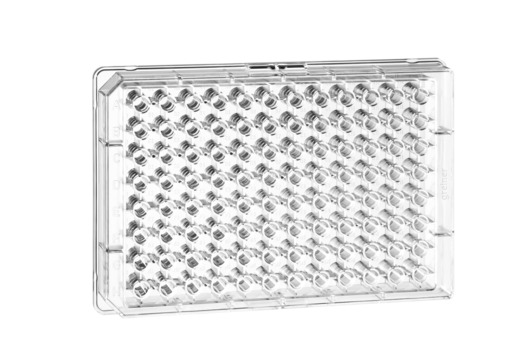UV-STAR® マイクロプレート
UV/VIS spectroscopy is a classical analytical method for determining the chemical constitution of a substance and its concentration in aqueous solution. UV/VIS spectroscopy is usually conducted in quartz glass cuvettes. However, cuvettes do not provide sufficient throughput when dealing with large amounts of samples, and microplates can be used to speed up work.
Standard polystyrene microplates are only partially suitable for transmission measurements in the UV. Polystyrene absorbs UV especially in the short-wavelength range (< 320 nm). μClear® microplates with a thin polystyrene film base already have much lower background values and can be used up to 340 nm without any problem. The adaptation of the patented μClear® process technology to a new, innovative UV-transparent material has made it possible to produce microplates that extend the transmission range up to 230 nm.
For the determination of nucleic acid and protein concentrations at 260 nm or 280 nm without background interference UV-Star® microplates are the ideal alternative to expensive and fragile quartz glass plates or cuvettes. UV-Star® plates are also DMSO-resistant and can be stored at -20 °C without any problem.
In accordance with Lambert Beer’s Law, the amount of absorbed light in a sample is proportional to the concentration and layer thickness (i.e. pathlength) of the substance to be measured.




